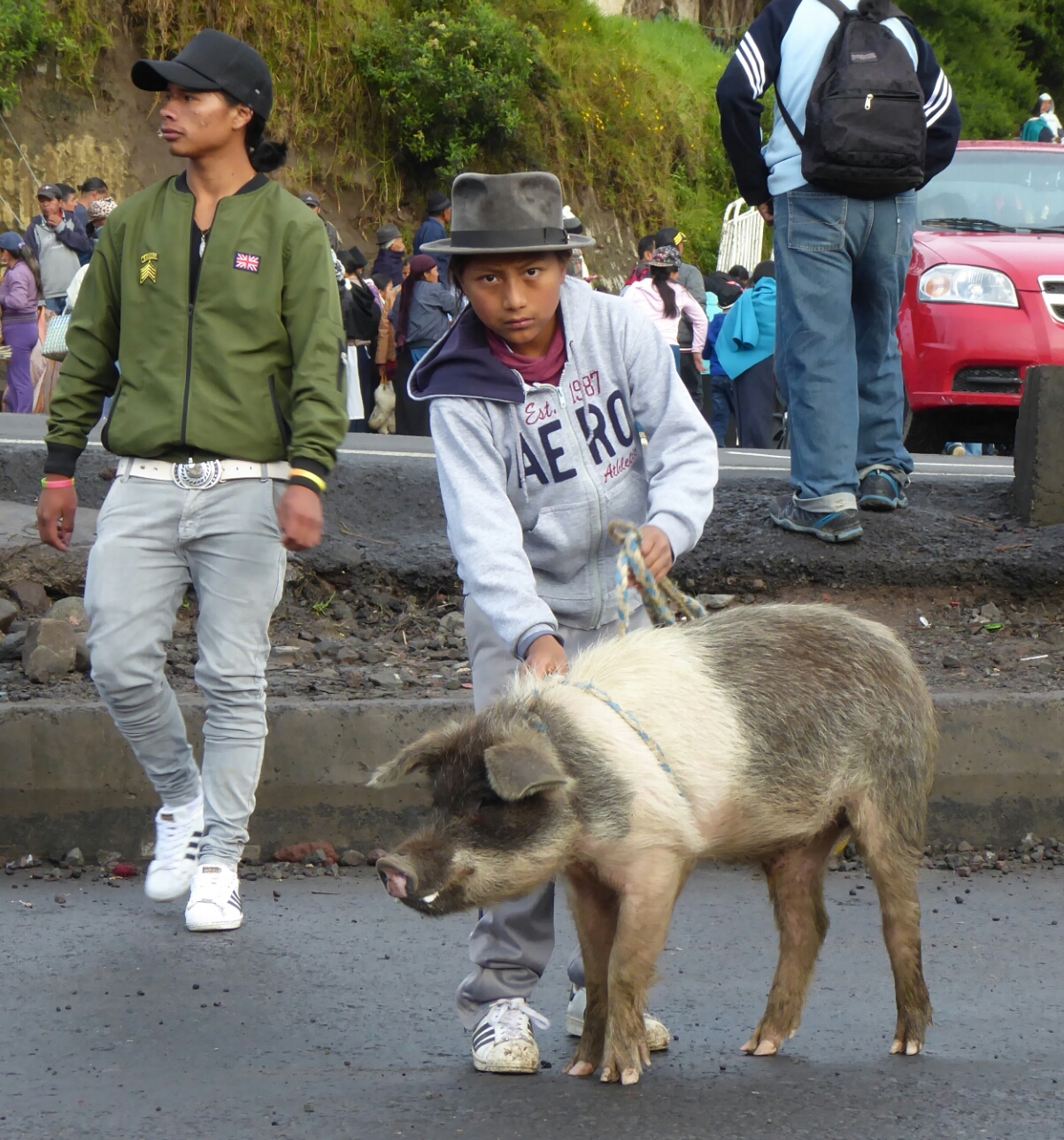 I loved Mindo and it was tough to leave but I do not miss the hungry insects.
I loved Mindo and it was tough to leave but I do not miss the hungry insects.
Arriving in Otavalo was more city than I was prepared for. Cars! Buses! Noise! The highlight is the Saturday Market for animals which makes one question her consumption of meat.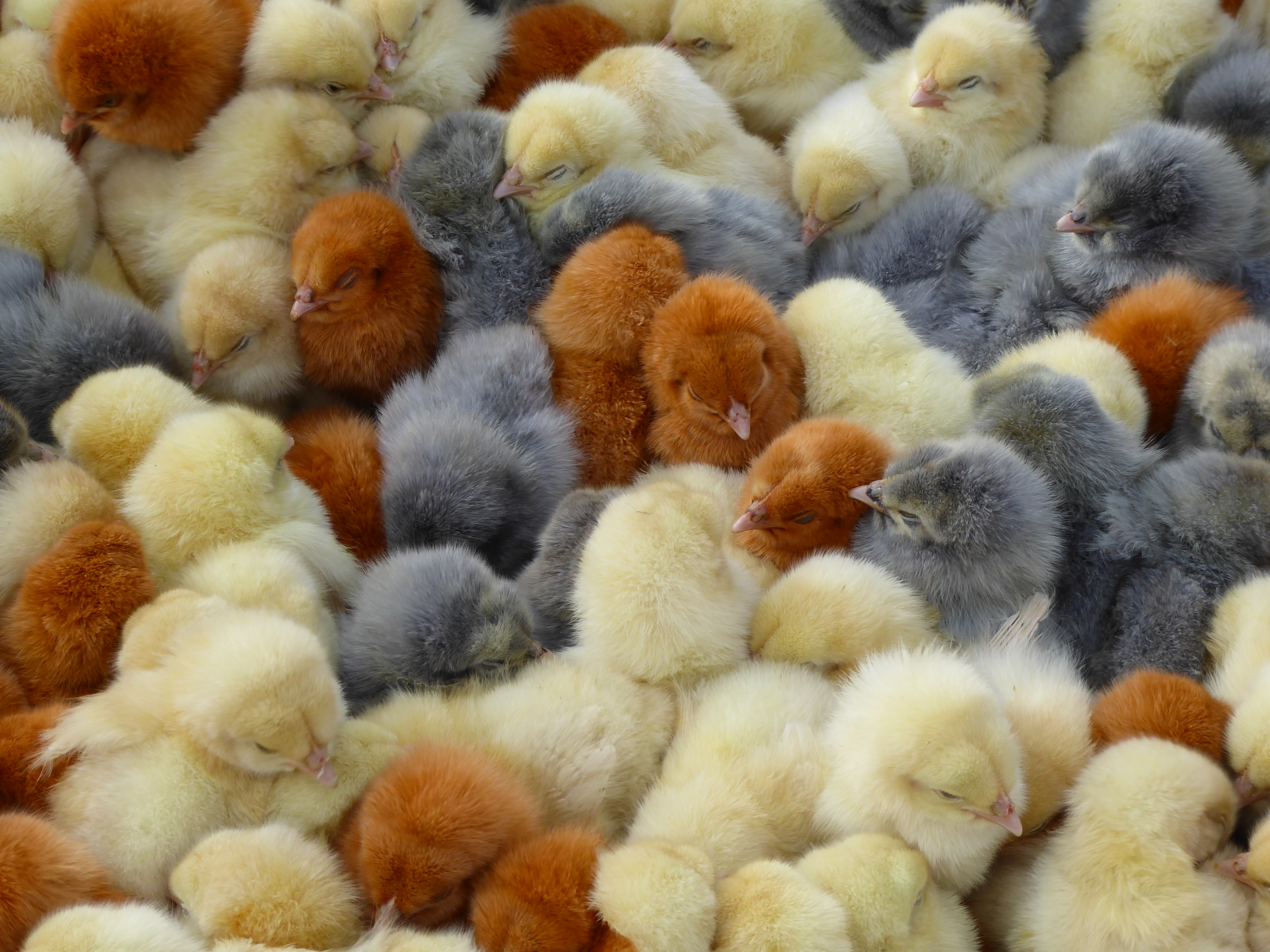 Pigs, sheep, cows, chickens, roosters, ducks, guinea pigs, are bound, bagged, tethered, and treated like the soon to be dinners they are.
Pigs, sheep, cows, chickens, roosters, ducks, guinea pigs, are bound, bagged, tethered, and treated like the soon to be dinners they are.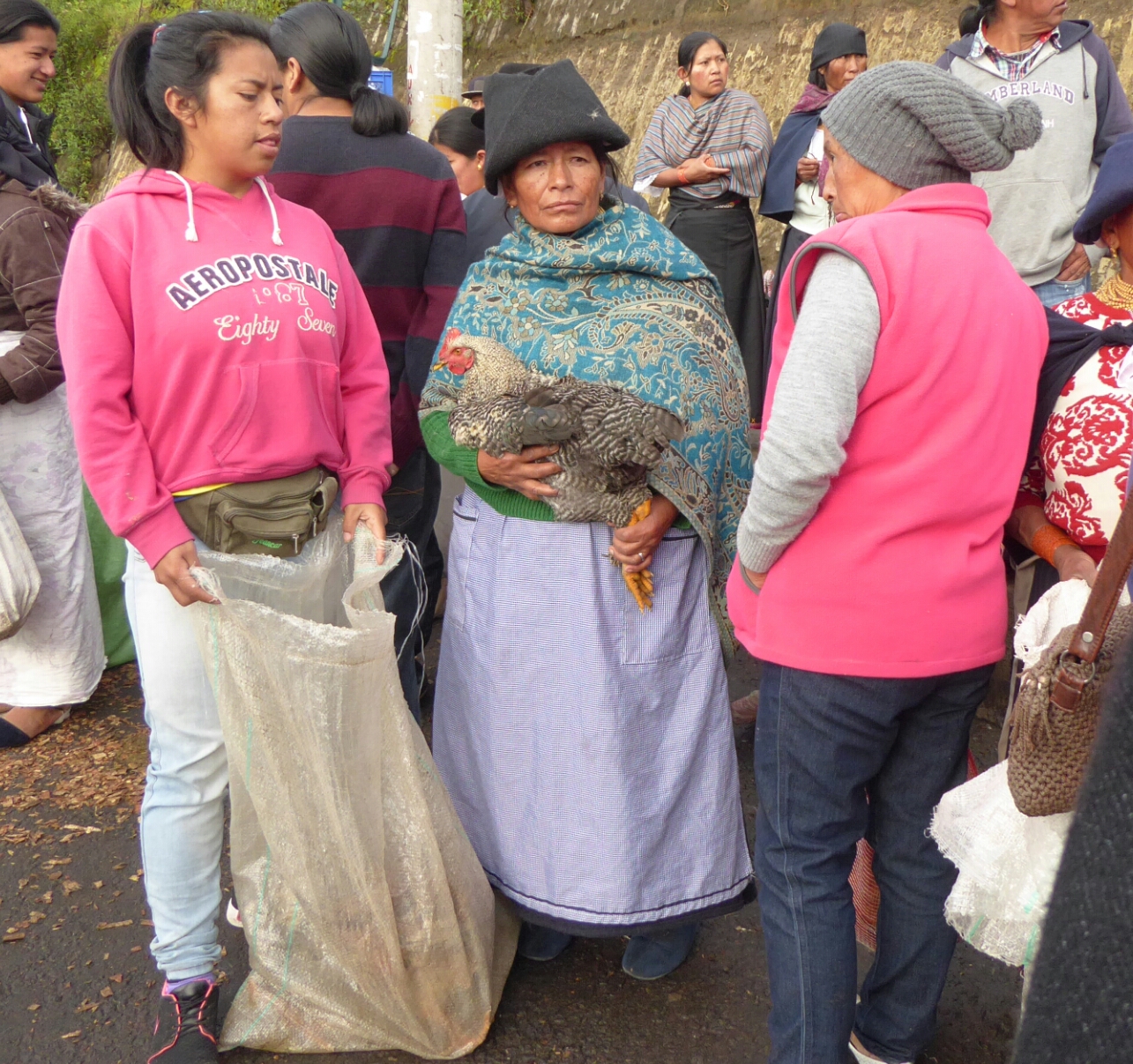 A bit tough to watch from the sanitized supermarket culture I’m accustomed to, but the market offers a glimpse of the reality few of us think about.
A bit tough to watch from the sanitized supermarket culture I’m accustomed to, but the market offers a glimpse of the reality few of us think about.
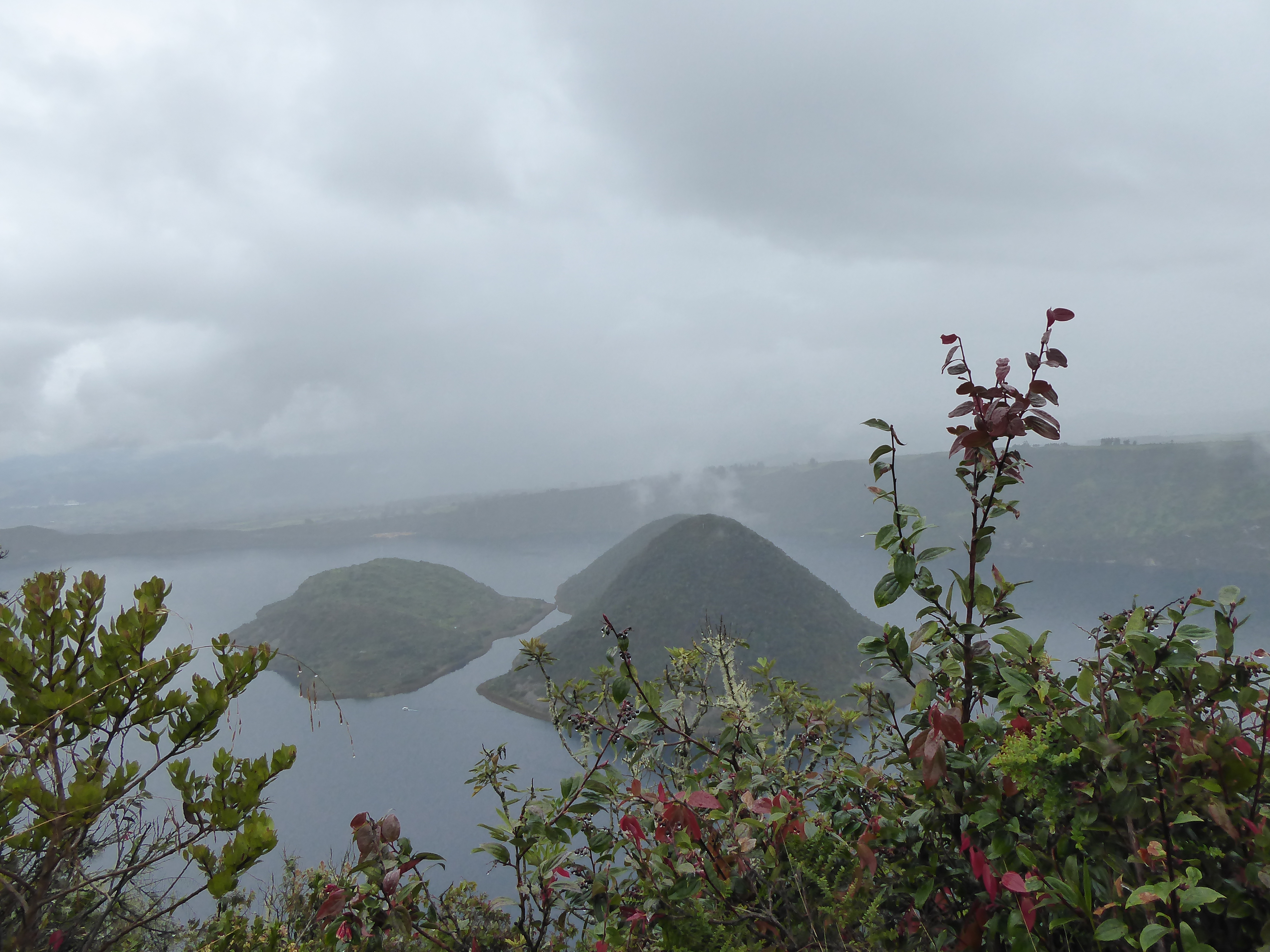
I took a 16km hike around Lagoona Cuicocha in a torrential downpour (Rain seems to be everywhere.) The views, when visible between raindrops, were gorgeous. I was told it was highly recommended to go with a guide, “the path was tricky” so I sought out a trekking agency and they provided me with an indigenous guide. He was barely an adult. The path was tough with lots of ups and downs, but extremely well marked. It was my guide’s second time around the lagoon (I appreciated his honestly). He was able to answer some of my questions, using as few words as possible, and was content to walk behind me the entire time. I never heard his feet touch the ground and he only spoke if spoken to, so ultimately it was as if I was there alone.
The following day I walked from Otavalo, beside an infrequently used rail track (the locals walk on the tracks), to a waterfall in Peguche. The waterfall is in a spacious verdant park with trails and camping. Indigenous people offer tasty meals (trout, pork, chicken) to the tourists in ancient looking eateries that were actually new, on grills or large pots over wood fires. After a filling delicious meal of steamed trout I visited a funky little museum with photos of Otavalo and the surrounding area one hundred years ago. Life has changed and remained the same.
For two dollars I was invited to visit a cave “built by the Incas, then used by the Spanish” for “meditation.” The inside decorations of faux flowers was kinda hokey-but I stayed awhile for some peaceful contemplation. I enjoyed conversing with the people in the park about life and such. They were very friendly and curious, and since there were very few visitors seemed in no hurry. Throughout Ecuador I am always asked the same questions: Traveling alone? Married? Children? Do you like Ecuador? How long are you staying? But this time I was asked: How old are you? Are you here to buy property? I only answer the questions I wish to. One man knew of President Washington and asked about the president today. The name Trump meant nothing to him. It was refreshing.
I continued walking up the road through some indigenous communities where numerous dogs greeted me with various degrees of friendliness. 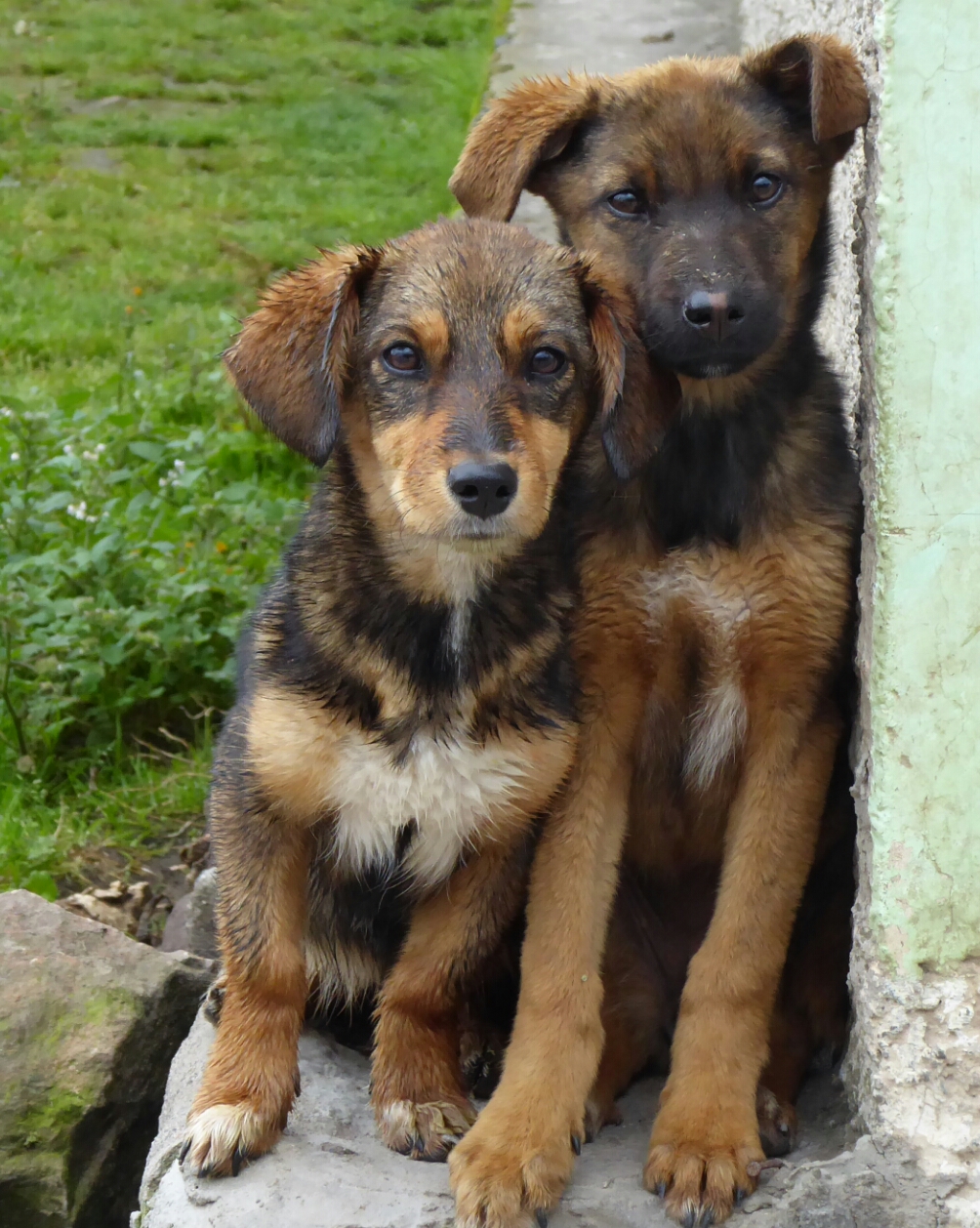 Don’t let this photo fool you. Some can become quite territorial. I picked up a few hearty rocks to ward off one aggressive hound and pretended to throw one. It quickly retreated.
Don’t let this photo fool you. Some can become quite territorial. I picked up a few hearty rocks to ward off one aggressive hound and pretended to throw one. It quickly retreated.
Later, I was struck by the image of a woman grazing her cows and wanted to take her photo, but was too far to ask permission. I snapped a shot and thought she was displeased. I waved in apology. But I was likely mistaken. Shortly after we were chatting like old friends. She made the motion to speak first. After asking where I was from, she asked if my parents were still alive. We sympathized our common loss. It was a novel way to start a conversation but it was also very touching. As I waited for a bus back to Otavalo we spoke of family and cows.
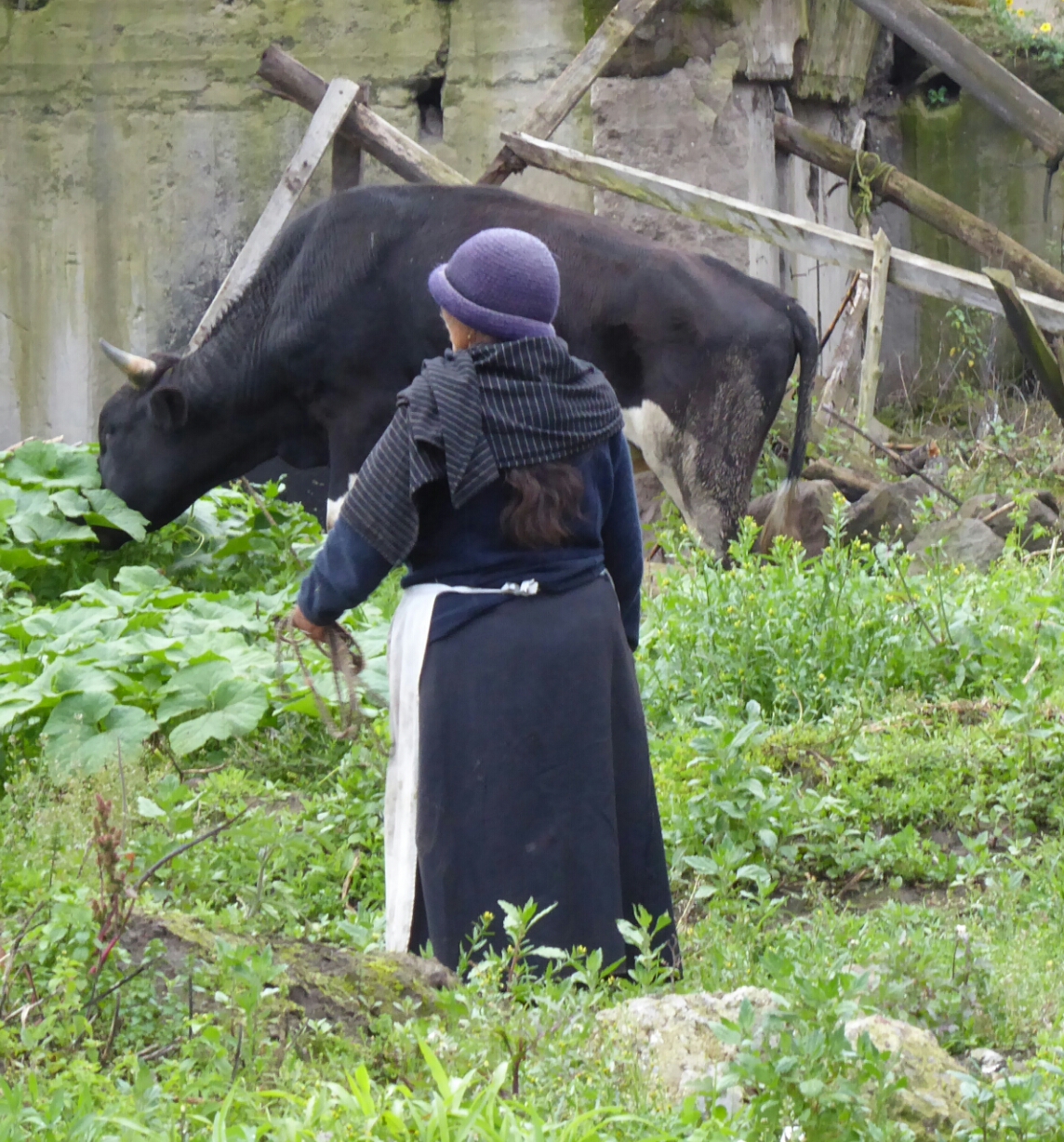
I then decided to spend two nights with an indigenous family outside of Cotacachi. Mom, Mercedes, dad, Mario, two daughters (22 and 18) Isabel and Diana and their sons (4 and 2) Ally (who I thought was a girl given his plaited hair then realized the men wear one long braid down their back.) and Dylan (Bob Dylan was an unknown.) son-in law Jimmy(18) who could have been a model, three dogs, cows, chickens, pigs, and guinea pigs. The home was basic but the bed was extremely comfortable and the Volcano Cotacachi loomed large from my window.
I helped make tortillas on an open fire and attempted with little success to milk a cow. Mario was trying to have me “cured” of any ailments by seeing the local shaman at $30 a visit. He uses a guinea pig for diagnosis. Mario spoke of other tourists being cured of cancer after two visits. I finally convinced him that I was fortunately quite healthy. The children attended high school and university. 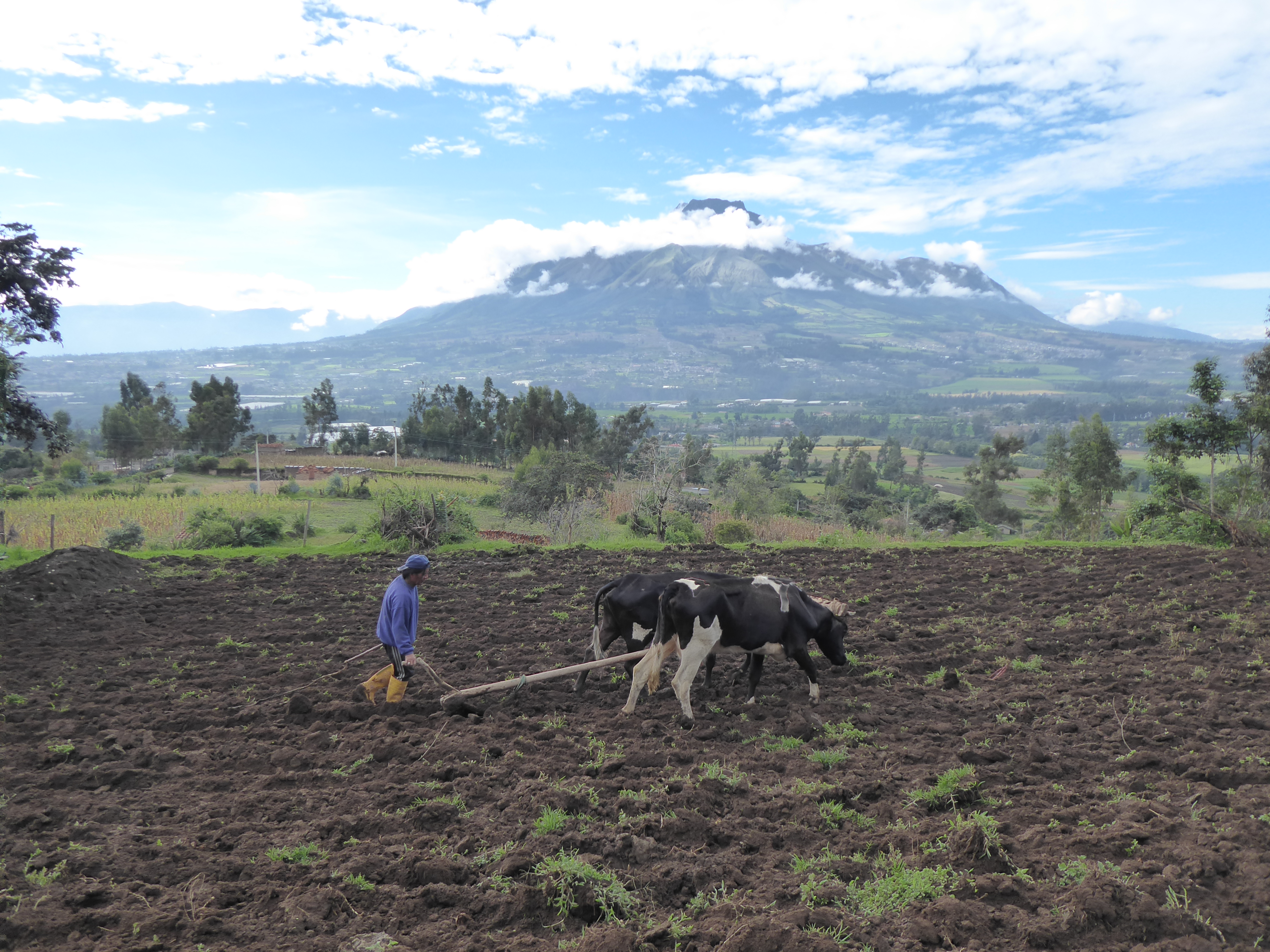
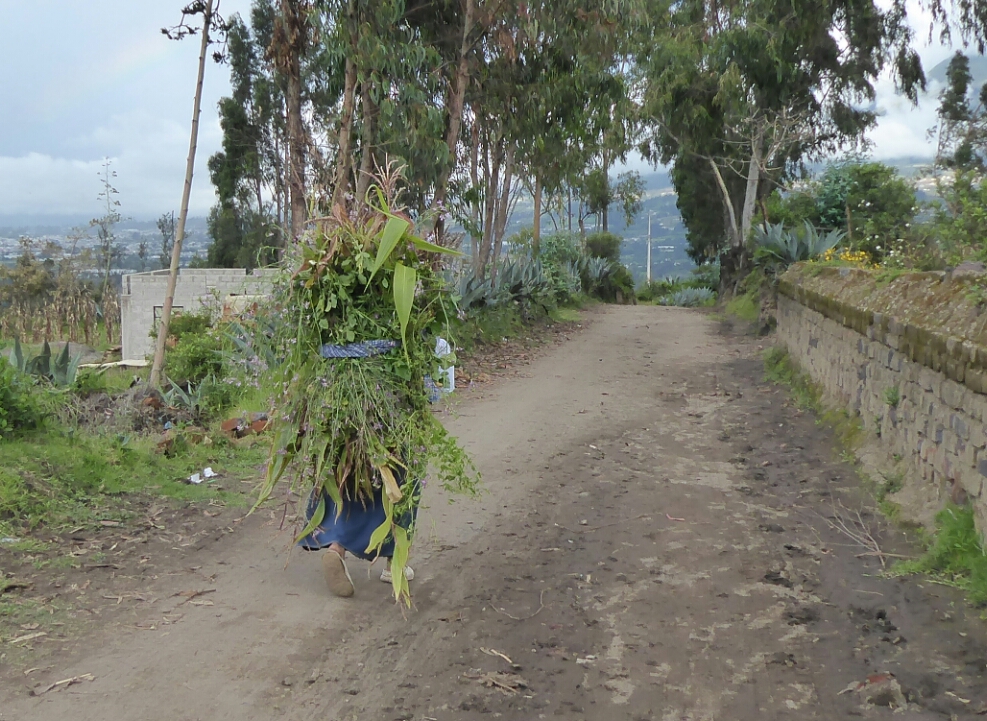
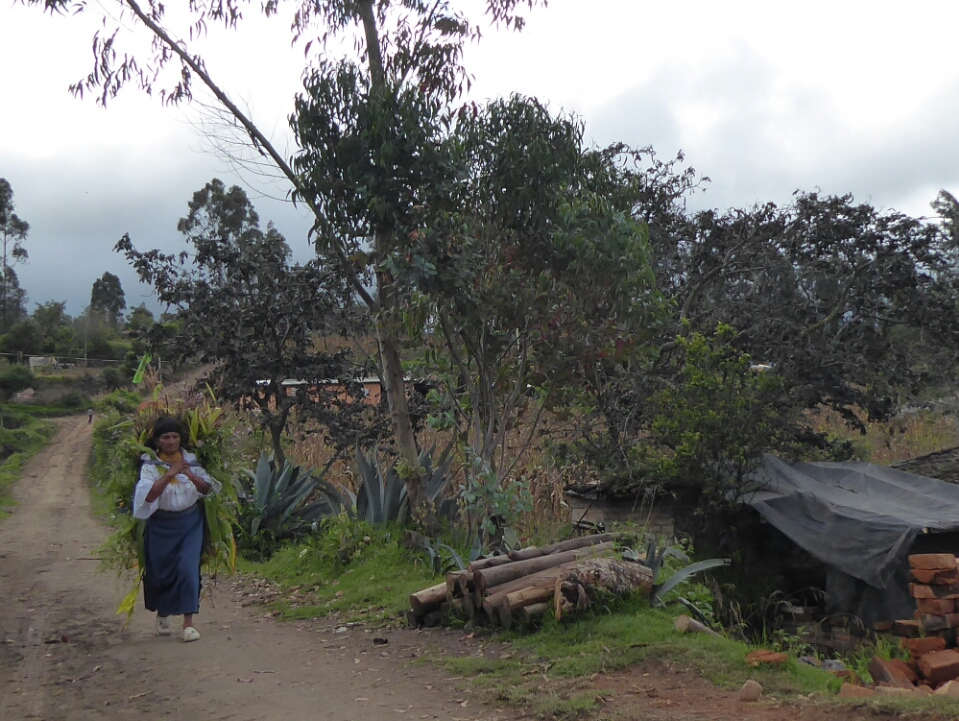 The parents toiled from sun up to sun down- tending the livestock, plowing the field with two cows no differently from centuries past, drying corn, making large pots of soup on open flames, and a multitude of other daily chores. They stopped to eat, sleep, and converse with me.
The parents toiled from sun up to sun down- tending the livestock, plowing the field with two cows no differently from centuries past, drying corn, making large pots of soup on open flames, and a multitude of other daily chores. They stopped to eat, sleep, and converse with me.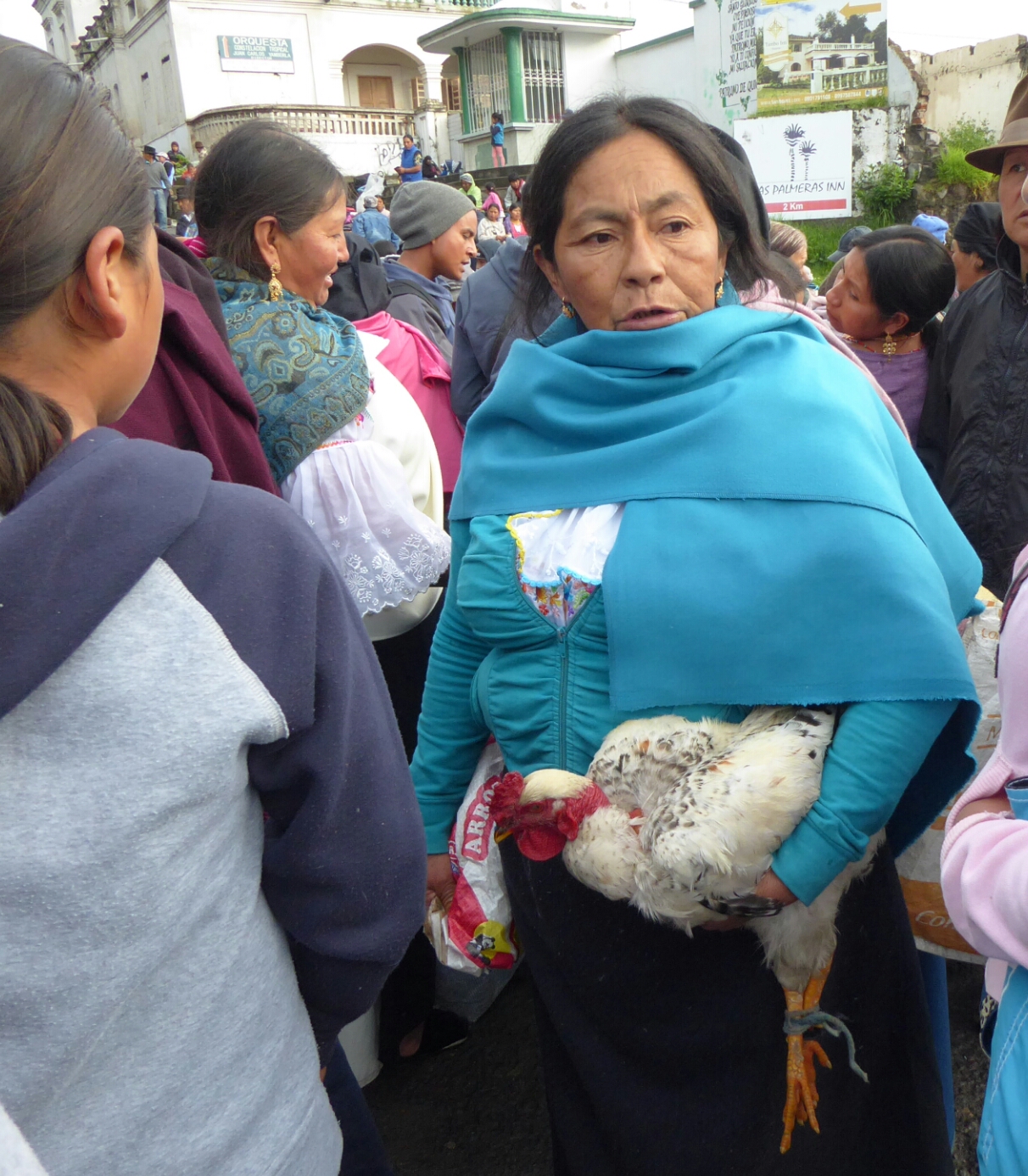
Cotacachi is a Mecca for retired Americans living on Social Security benefits. It had a strange vibe between the gringo and local culture. But the retirees I saw seemed quite content chatting in various American accents over their American breakfasts.
Needing a few days to figure out what to do next I decided to head back to Quito and see sites I missed the first time around: The exquisite Casa del Alabama offering a fine collection of Pre-Colombian art and the impressive gold filled church-La Compañia were outstanding.
I think my next stop is Cotapaxi in the hopes of doing some riding. Hopefully the rain gods will soon be appeased!